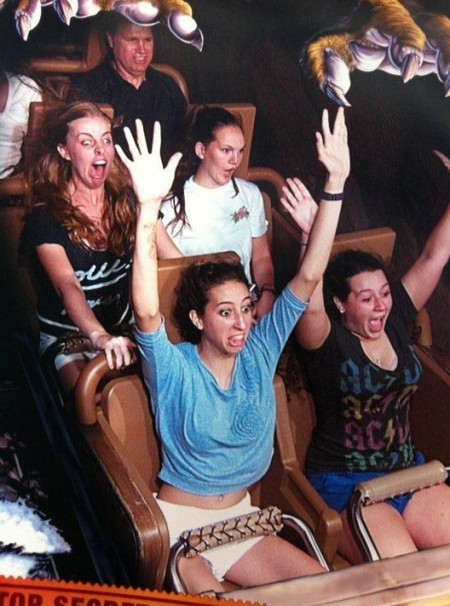4 stages of fear
by Max Slowik, die-less.comJune 21st 2012

Your brain does screwy stuff when it’s under stress. As if you really needed to know you do strange and stupid things under pressure. What’s interesting is how. There are actually four stages of fear, all of them instinctual, evelutionary responses to threats and danger.
You probably know that the first thing that happens is a cortisol/adrenaline dump, which causes your heart, lungs, and muscles to ready themselves. When bad shit does happen, parts of your brain shut down while other, more basic parts, start to take over, which is why people sometimes don’t remember what, exactly, they went through; their hippocampus turned off, it wasn’t a priority.
FREEZE
The Mancos River rises in southwestern Colorado and flows through the Ute Mountains on its way to New Mexico, where it empties into the San Juan River three miles shy of the Four Corners intersection. Over millions of years, the river and its tributaries have carved a fanlike rill of dramatic canyons out of the ancient sediments of the Mesa Verde tablelands, a maze of vertiginous stone walls. The rugged, arid landscape of juniper forest proves a rich habitat for wildlife.
At 25, Sue Yellowtail was just a few years out of college, working for the Ute Indian tribe as a water quality specialist. Her job was to travel through remote areas of the Ute reservation, collecting samples from streams, creeks, and rivers. She spent her days crisscrossing remote backcountry, territory closed to visitors and rarely traveled even by locals. It’s the kind of place where, if you got in trouble, you were on your own.
On a clear, cold morning in late December, Yellowtail pulled her pickup over to the side of a little-used dirt double-track, a few yards from a simple truss bridge that spanned a creek. As she collected her gear, she heard a high-pitched scream. Probably a coyote killing a rabbit, she thought. She clambered down two steep embankments to the water’s edge. Wading to the far side of the creek, she stooped to stretch her tape measure the width of the flow. Just then she heard a rustling and looked up. At the top of the bank, not 30 feet away, stood a mountain lion. Tawny against the brown leaves of the riverbank brush, the animal was almost perfectly camouflaged. It stared down at her, motionless.
She stood stock-still.
Yellowtail had entered the first instinctual fear-response state, the condition of freezing known as attentive immobility. Even before she was aware of danger, subconscious regions of her brain were assessing the threat. Cued to the presence of a novel stimulus, the brain deployed the orienting reflex, a cousin of the startle reflex. Within milliseconds Yellowtail’s heart rate and breathing slowed. A brain region called the superior colliculus turned her head and slewed her eyes so that the densest part of the retina, the fovea, formed a detailed image of the cat. The visual information then flowed via the thalamus to the visual cortex and the amygdala, the key brain center for evaluating threat. Her pattern-recognition system found a match in the flow of sensory information. It recognized a pair of eyes, then the outline of a feline head.
In less than half a second, before her cortex even had time to complete the match and recognize what she was seeing, her emotional circuitry had already assessed the situation: It was bad. Subconsciously, her brain also determined that the threat was not immediately pressing, and so a region called the ventral column of the periaqueductal gray (PAG) triggered attentive immobility. This is generally considered the first stage of the fear response, because it tends to occur when the threat is far away or not yet aware of the subject’s presence. The goal is to keep it that way.
It’s a great read. The 4 Stages of Fear: Attacked-by-a-Mountain-Lion Edition, but here’s a video that scratches the surface if you’re in a rush.
Unfortunately, I don’t think you can benefit from knowing this directly, since if you’re ever in the sort of situation where your inner Australopithecine starts to kick the shit out of everything that you think makes you an individual person, this knowledge isn’t going to help you out.
However, it can help you deal with other people who are freaking out. Knowing this means knowing what they’re going through better than they can in their state, and can maybe stop you from doing something that could wind up with them ripping your eye out with a pair of forceps.
Also? Bear spray. Works on pretty much anything that moves under its own power. But point away from face, seriously, that shit can kill you.
Original Page: http://die-less.com/2012/06/21/4-stages-of-fear/
Shared from Read It Later
Comments
Post a Comment